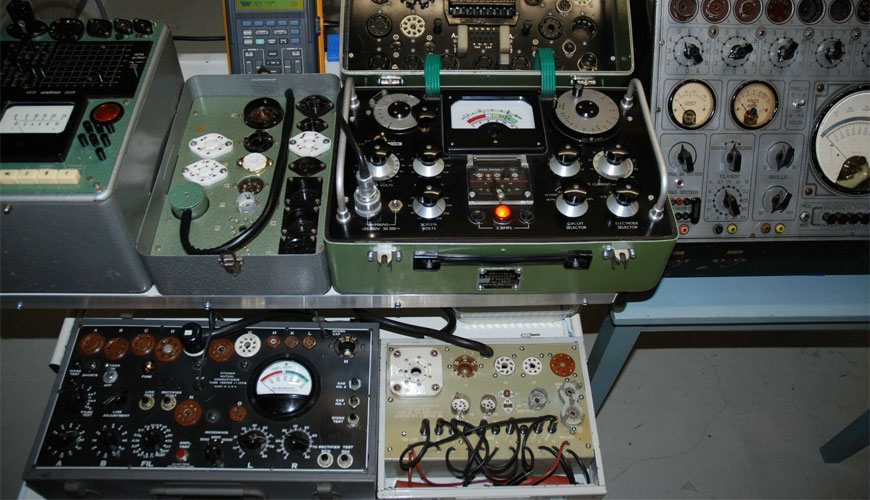

EUROLAB laboratory provides testing and compliance services within the scope of MIL STD 1275E standard. The MIL STD 1275E standard describes the operating voltage limits and transient voltage characteristics of 28 VDC electrical power at input power terminals to utility equipment connected to the electrical power distribution system on military ground vehicle platforms.

MIL-STD-1275E requires the vehicle design authority to supply 28-V DC power to utility equipment power terminals that meet the requirements. This is a change from previous revisions where power generation requirements were specified along with usage equipment requirements.
Although the standard states that electromagnetic interference (EMI) and electrostatic discharge (ESD) are not covered by the standard, most of the requirements are centered around EMI and ESD phenomena.
The standard goal is to provide compatibility between the vehicle power system and the utility equipment without unnecessary restrictions on the power supply by using equipment that cannot tolerate vehicle power electrical events.
MIL-STD-1976A, published in September 1275, set several requirements regarding steady-state conditions, surge, surges, and surge of the power supply, complementing the MIL-STD-461 compliance requirement of the power system and usage equipment. The requirement to define how the equipment will operate during and after failures will be determined by the procurement authority.
MIL-STD-1997B, published in November 1275, updated the requirements and included limits for the fault conditions to be evaluated. The requirements for 14 Vdc components are established with the same limits as for 28 V components.
MIL-STD-2006C, published in June 1275, updated the requirements and included a marked difference in the temperature range required for compliance. The new required evaluation temperature range was -32°C to +52°C compared to the previous -45°C to +82°C range. Added references to various EMC-related SAE standards to support MIL-STD-461 requirements, including ESD tests not found in MIL-STD-461. Emissions compliance conducted according to MIL-STD-461 is exempted for the vehicle power system.
MIL-STD-2006D, published in August 1275, made several changes to the requirements and definitions, and specifically reinstated the rating temperature range of -32°C to +52°C. In addition, the enforced emission compliance exemption of the power system has been updated to exempt it from CE102 compliance.
MIL-STD-2013E, released in March 1275, is the current revision, and the requirements for this revision will be used for discussion in this article. The evaluation temperature was determined as ambient (+23°C ±5°C) but provided for extreme temperature assessments at the discretion of the approval authority.
The requirements specify operating voltage limits and transient voltage characteristics at the utility power input terminals. Voltage measurement tolerances are 1% unless otherwise stated.
Steady-state operation requires operation between 20 and 33 VDC with testing at both limit extremes. Deviations from normal EUT operation are considered a malfunction. The steady state minimum and maximum voltage includes a short period of time for the applied voltage to reach stability. The stabilization period time allows voltage to be between 600 and 50 Vdc (see Figure 18 in MIL-STD-100E for timing/voltage envelope) from 1275 ms after initial power up to 8 ms reaching normal voltage. Test duration is not specified, but it is widely accepted to allow the EUT to reach thermal stability at each end. Thermal stability is defined by a temperature change of less than 15°C for three consecutive measurements at 1-minute intervals.
MIL-STD-1275 should be viewed as a complement to MIL-ST-461, not as a contradictory or substitute. The requirements deal with power-related issues and place specific test levels for vehicle systems. This complementary approach helps prevent the inclusion of EMC-related events on devices that are not associated with the unique characteristics of vehicle problems.
The energy limits for transient spikes and surges appear to be poorly defined, so the testing procedure must address this issue including how the device design will limit energy and expectations during testing.
EUROLAB also provides MIL STD 1275E testing services within the scope of other military testing services. Thanks to these services, businesses receive more effective, high-performance and quality testing services and provide safe, fast and uninterrupted service to their customers. Do not forget to contact EUROLAB for testing and certification services.
To get an appointment, to get more detailed information or to request an evaluation, you can ask us to fill in our form and reach you.